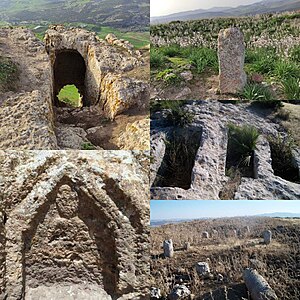Timici was a Phoenician, Numidian, and Roman town located in present-day Ain Matboul, Algeria [1] (between Sidi M'hamed Ben Ali and Taougrit).
Contents
| Timici | |
|---|---|
 Timici ruins | |
| Location | Aïn Metboul, Sidi M'hamed Ben Ali |
| Height | 500 |
| Built | 4th century BC |
| Demolished | 6th century |
| Restored | 1st century [ clarification needed ] |
| Architectural style(s) | Punic and Roman |
